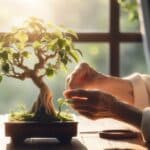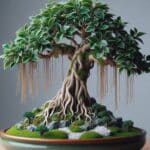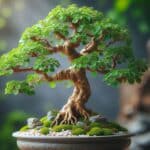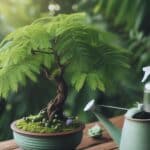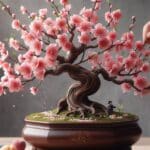Are you considering getting a bonsai tree? Or perhaps you were gifted one? Are you seeing them everywhere now, and you are wondering how you can get one? Or are you merely curious about how they get to be that size? Maybe you heard about the many psychological benefits of having a bonsai tree?
Either way, if you are thinking about delving into the fantastic (and sometimes understood!) world of bonsai trees, then this article is definitely for you.
Some bonsai trees will require a lot of care, however, many bonsai species are great for beginners like yourself, because they are strong enough to withstand some of the mistakes that you will undoubtedly make.
Being a novice doesn’t mean you will kill your own bonsai tree during the first month, though, but it does mean that you could damage their growth and strength if you are not taking care of them well enough.

How to Start a Bonsai Tree As A Hobby
So, are you ready to get a bonsai tree? If so, then you do need to ask yourself a couple of questions before obtaining your bonsai.
For example, is the tree going to be indoors or outdoors? What type of climate do you have where you live? Are you ready to learn about bonsai trees? Your bonsai trees will look fantastic if you follow the simple steps in this article.
This is why this guide will become your best friend (well, almost) because we will show you how to grow, care, and maintain any bonsai trees, especially if you are a beginner.
Don’t worry, though, as we will try to explain everything as simply and straightforward as possible, so continue reading if you are now ready to explore the world of bonsai trees.

Choosing The Right Type of Tree for Bonsai
There are many types of bonsai trees. You will first need to choose the right bonsai for you, and then start planting and growing it.
Did you know that Bonsai plants come from a Chinese and Japanese tradition where they would cultivate almost any type of tree and make them miniature specimens in small pots?
Some people argue they would do this as they didn’t have enough space, whereas others believe bonsai trees are like this because they presented challenges to those who cultivated them regarding the techniques they had to use.
The art of maintaining bonsai has been around for thousands of years in Asia, but the rest of the world soon caught up and started to learn this unique way of maintaining and having trees.
You can now grow them from seeds so you will experience the growth and see the life of a bonsai tree, or you could simply obtain an already established species so you can take care of it. Either way has its unique characteristics.
Here are some common bonsai tree species people choose:
- Desert Rose Bonsai
- Japanese Red Maple Bonsai
- Bald Cypress Bonsai
- Gingko Bonsai
- Japanese Black Pine Bonsai
How To Plant A Bonsai Tree
Are you going to plant from seeds or not? Are you a patient type of person?
Some people will decide to buy or get some seeds and then see how it goes from there, whereas other individuals will be better off by foraging or getting an already grown-up bonsai. Either way, you should be aware of these things:
How To Grow A Bonsai Tree From A Seed
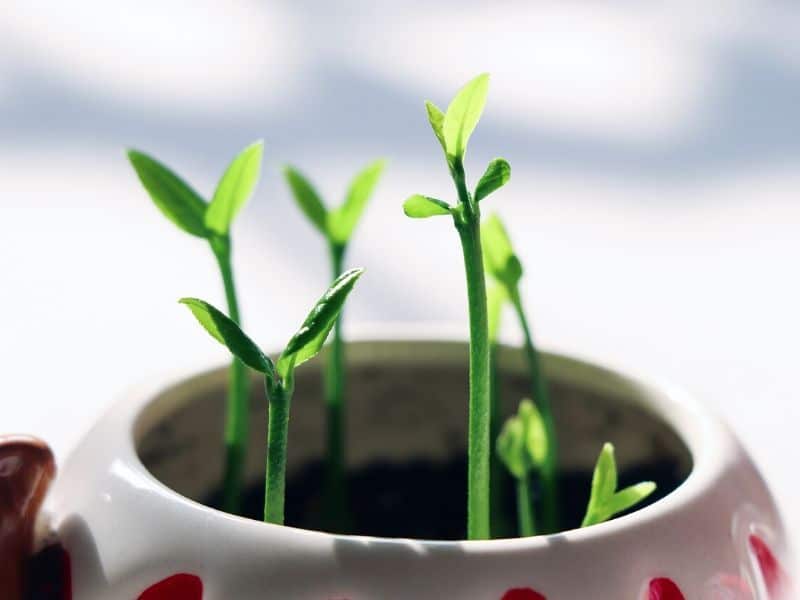
You should decide where you would like to plant the seed, therefore, you will need to take into consideration the strength and length of the roots.
You will need to be patient as the growth process could take up to five years.
Seeds are usually inexpensive, so you could get more and germinate more, knowing that sometimes some seeds will not germinate at all.
If you buy a package of seeds or if someone gives them to you, you should soak them the night before you plant them, this way they will “activate’’ and will be easier to sprout them.
You should then place the seed in a pot, not in a ceramic container (which is usually used once the tree has grown).
Treat the plant nicely: talk to it, give it a name, make sure they receive the right amount of sun and water, make sure there aren’t any damaging extreme weather conditions that may affect its development.
You must allow your tree to grow and become sturdy before you start training it, this way, your tree will not suffer any possible damage.
Foraging An Established Bonsai Tree

If you are not ready to grow a bonsai from its seeds, then this method will be right for you. You only have to acquire a bonsai tree that is already mature, and you then need to learn the basics to maintain it correctly. You should also consider the following things:
If you are foraging, then you should select a sturdy trunk, however, this piece of the tree should also be quite young still, as it will adapt better in your container.
Have a look at the roots of your tree: are they spread evenly, or are they going in any direction? If they are spread evenly, then go for it. If they are spread everywhere, then consider getting another tree.
If foraging, then you should dig around the tree where you are taking its trunk, and you should get some of that soil and put it in your container. This will help the tree to feel ‘’accustomed’’ to the new place where they are living and growing. It will also provide all the necessary minerals and nutrients that the tree was already receiving.
You should plant the tree in a larger training container. You are caring for this bonsai in accordance with the tree that has matured already, so you should think of the size of the trunk you extracted and place it in a proportionate container (always thinking it will still grow a little bit more).
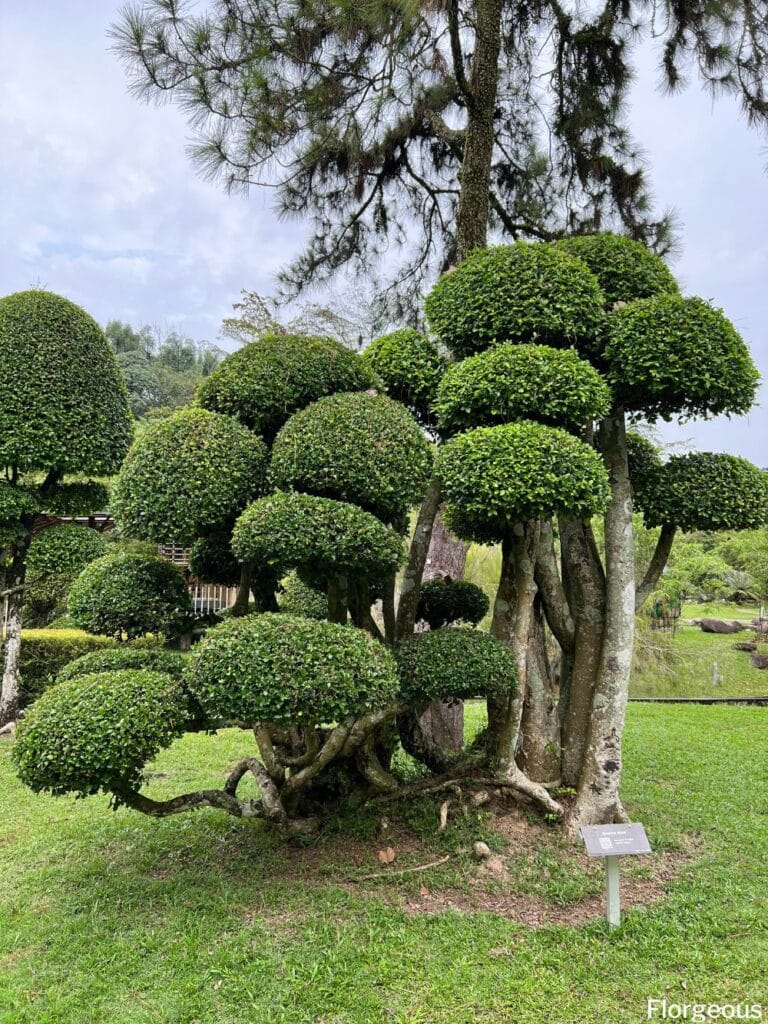
Where Should You Plant Your Bonsai Tree?
Is your bonsai going to be outdoors or is it going to be in your house? Perhaps you would want a bonsai that’s going to be outdoors and indoors? Your bonsai tree will solely depend on the climate of your region and how your home environment usually is.
Besides, there are bonsai trees that are indigenous to different areas of the world, so if you live in China, try to get a Chinese or Japanese elm. If you live in a hot climate, then consider getting a tropical bonsai such as Jade or even Snow Rose.
Outdoor Bonsai Trees Planting
Outdoor planting is mandatory for those trees that need continuous exposure to sunlight. You first need to understand this basic fact: sunlight is necessary for doing photosynthesis, which is when the sun’s energy is absorbed by the trees or the flower’s leaves.
This way, your plants will receive a much-needed fuel that will, in turn, make them healthy. If you are planting your bonsai tree outdoors, then you should get a Juniper bonsai or an Elms bonsai.
However, you must take into consideration the following things when planting outdoors:
- Even though they need sunlight, you will still need to place them in a shaded area, otherwise, they may experience leaf burn if they are receiving direct and intense sunlight.
- If you live in a windy area, then your bonsai should also be protected.
- If you live in a coastal area, then you must make sure your bonsai has an adequate drainage hole inside of its pot; otherwise, it will lead to root rot.
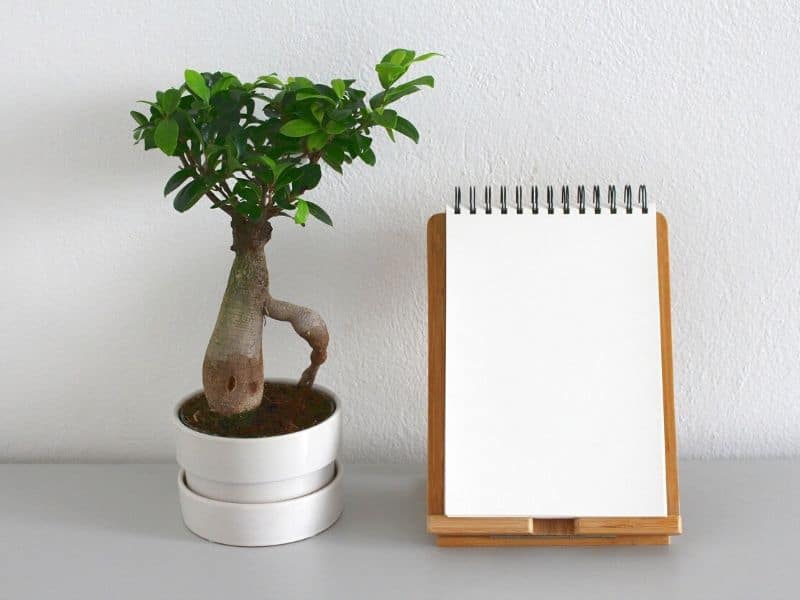
Indoor Bonsai Trees Planting
Growing a bonsai indoors is not difficult, as long as you follow these tips:
- You could choose the following indoor bonsai: Gardenia, Kingsville Boxwood, Hawaiian Umbrella, any Ficus bonsai, Serissa, etc….
- You should still place them near a window, so they get sunlight.
- Do not place them near a chimney as they can get boiling and dry.
- You will need to pay attention to them, especially when it’s the right time to water them.
Size is Everything
You should also think about the sizes of a bonsai tree. Can you imagine getting a bonsai tree thinking that it’s perfect for your small living room only to find out a couple of months later that it grew so much that you can’t keep it there anymore and you have to give it away because you don’t have space? This would be a terrible situation, that’s for sure!
On the other hand, if you really don’t have enough space, then why don’t you get a bonsai replica or a fake bonsai? You could place it wherever you want indoors, and you will not have to maintain it or keep an eye on it because, well, it’s not alive so it can’t die!
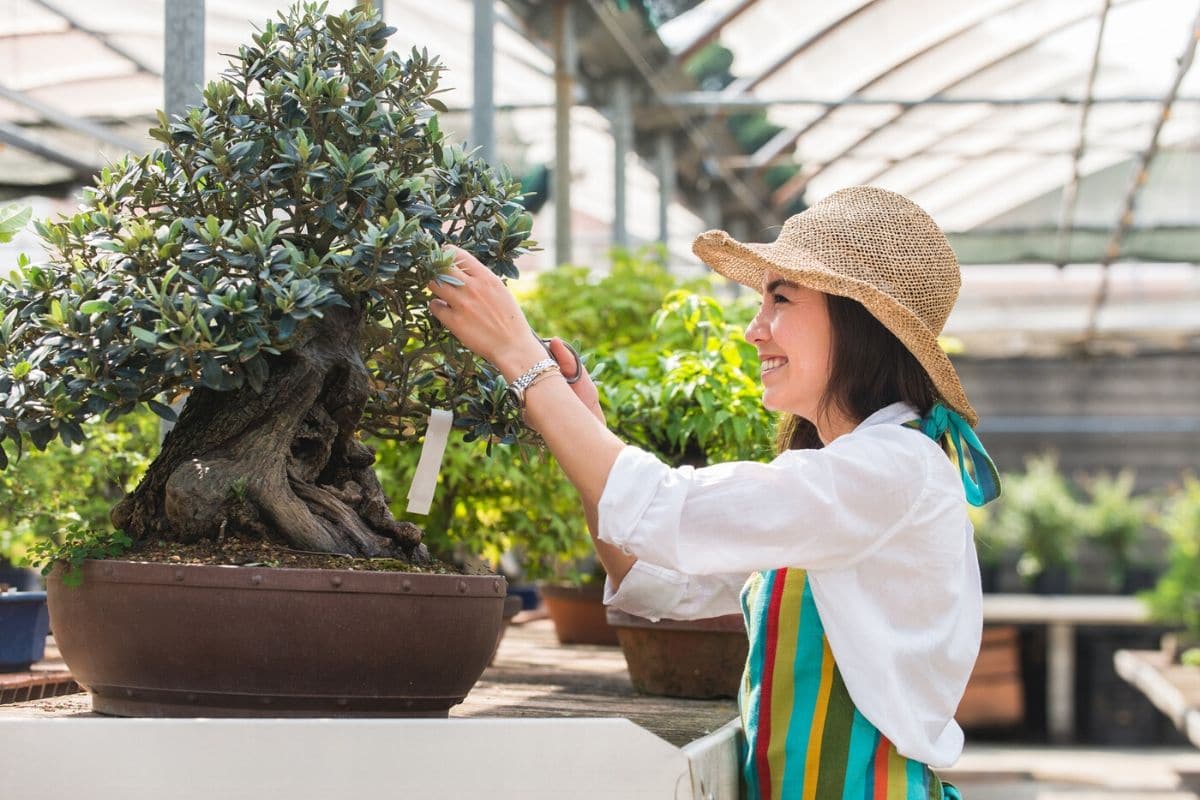
General Bonsai Care and Maintenance Tips
We have already established some of the things you need to take into consideration when starting to grow a bonsai tree. However, what are the things that you must avoid, or you must be aware of whenever you begin to grow your bonsai?
Bonsai trees are miniature trees, but they are very much alive. Therefore, they will need sunlight for a minimum of six hours a day. If you live in a place where this condition is not met, you could either get an artificial lamp or you could get a fake bonsai.
If you think your bonsai is too “brown’’ and dry, you start watering it every single day. If you do this, then you could end up overwatering your tree, thus, its roots will probably root. You will end up with a dead bonsai.
On the contrary, if you never water your bonsai because you think it doesn’t need water. After all, it’s indoors. You will end up with a dead bonsai as well.
Or perhaps you over-fertilize your soil, and you put all kinds of fertilizers not knowing which one will work best or which one is not going to do any good to your bonsai.
You over prune your bonsai tree, and you get all excited because you are giving your tree a much-needed cut. You will probably end up with a dead bonsai again.
And all of these mistakes lead us to this last point: you think you can get a bonsai tree because they are small so they must be easier to maintain.
However, you don’t read anything in advance, and you do whatever you feel like doing, even though there are some guidelines and help that will make your bonsai tree thrive. But this isn’t the case with you, because you are already reading this guide.
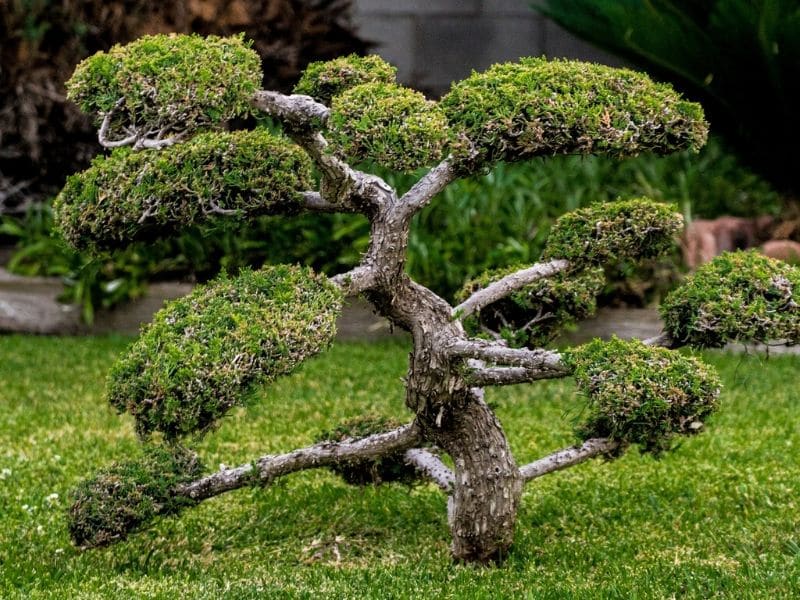
How to Care For a Bonsai Tree
Keep these things in mind for the benefit of your bonsai tree:
- Your pot will need to have excellent water retention (because your bonsai needs to absorb this water).
- It will also need to have good drainage (so your plant can easily eliminate all excess water).
- And lastly, you will need proper aeration (so air can easily flow from the top of the tree to the roots of it. By doing this, you will be allowing good bacteria to be continuously floating from top to bottom).
But what else will you need for your bonsai tree to thrive?
Soil Conditions
You need to make sure your bonsai soil has the correct pH value, which is preferably to have 6.5 up to 7.5. Also, depending on the bonsai tree you get, you could put some compost into the pot, as this will be crucial for the strength of your tree.
Also, the pot you choose must allow water to be drained, this way, you will make sure all the bonsai roots stay slightly damp but not soaked. It is important to use a well draining soil mix to ensure that the roots of your bonsai tree do not become root bound.
The quality of the soil mixture you are using is directly linked to the health of your bonsai. So think about it this way, if your soil is lacking all the necessary nutrients, then your bonsai will also require all of those nutrients, therefore, they will present problems in the long run.
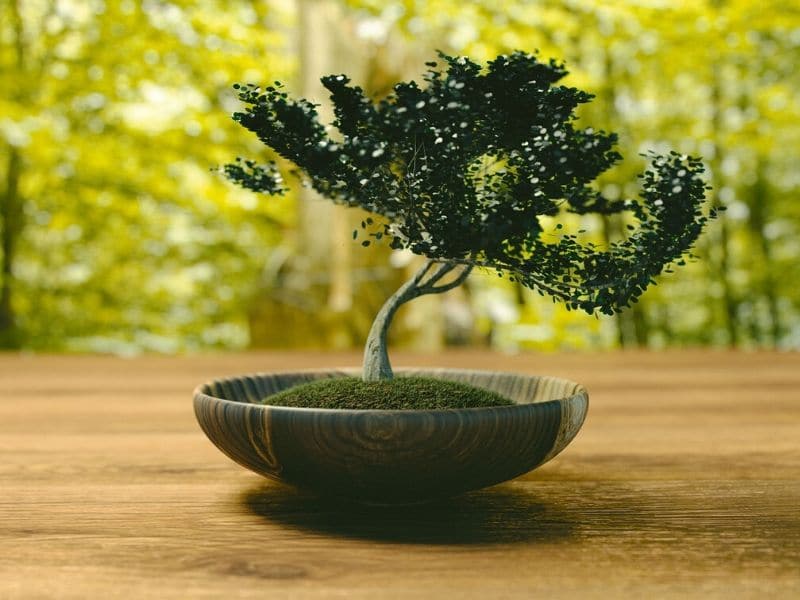
Lighting
Sunlight is essential to any plant. However, bonsai trees are known for needing at least 6 hours of direct sunlight daily. Of course, this will all depend on the type of bonsai you got, but most of them have this essential requirement.
If you live in an area where you cannot get 6 hours of direct sunlight into your bonsai, then you could easily let your bonsai soak up to 12 hours of daily daylight.
A warning note: bonsai trees don’t do well when you place an artificial light for them to grow. So, if you can, try to avoid this as much as possible and only expose them to the sunlight.
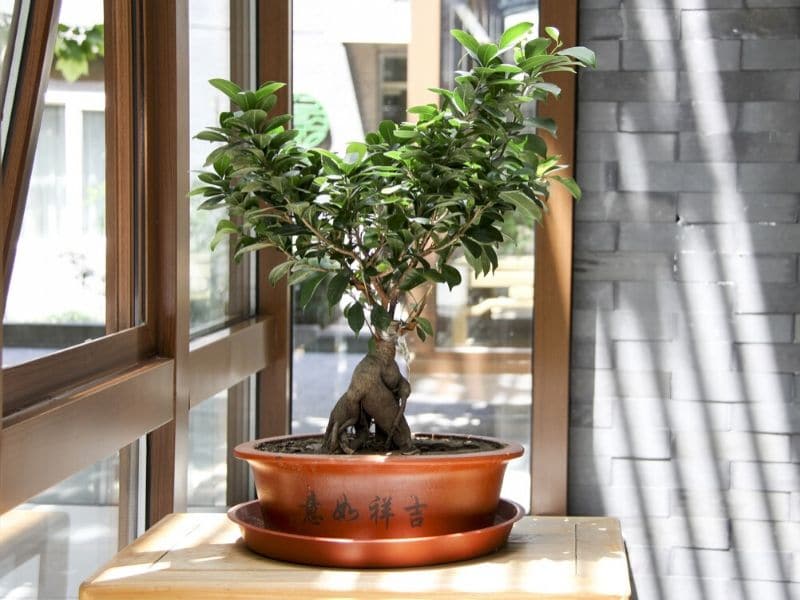
Watering
When it comes to watering a bonsai tree, there is a simple trick you can follow to understand when your bonsai needs water: if you place your fingertips right on the top inch of the soil, and this is dry, then you need to water your bonsai. You can water abundantly, so your pot is now soaked. However, you should never allow your pot (and soil) to be dried entirely, as this could harm your bonsai.
Watering will depend on whether you are in the middle of summer or winter, if you live in a hot area or on the contrary, in a very cold area. It will also depend on how much sunlight your bonsai receives or not, and what type of bonsai you have.
You should always check on the soil first, though, and do the simple trick you already know. This way, you will feel your bonsai’s soil instead of only guessing.
And because some bonsai trees are usually grown in small pots, they dry out fast. That’s why you need to water your Bonsai regularly.
You should always water your plant early in the morning. Have a watering schedule, especially when you are growing a bonsai. This way, your tree will get used to receiving water.
It’s normal for your bonsai to need more water during the summer. If it’s winter, then your bonsai is probably dormant, thus, it won’t require as much water as before.
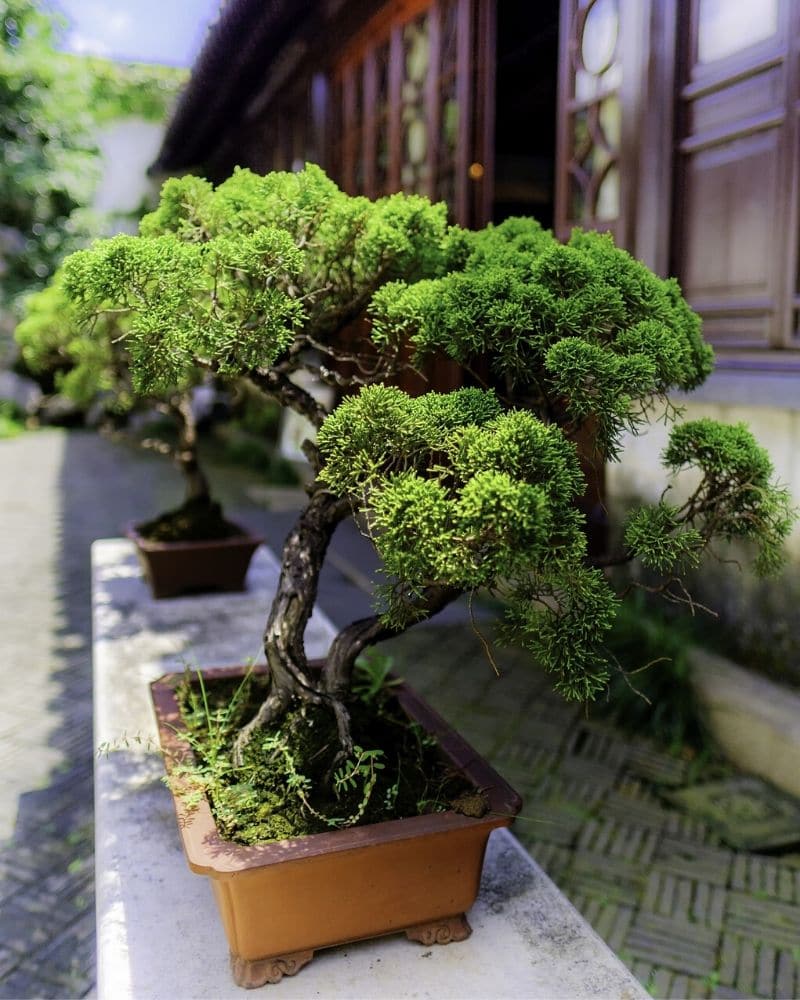
Potting and Repotting Bonsai
When it comes to bonsai tree care, selecting the right bonsai pots for your tree is an essential part of the art. The bonsai pot should not only be functional, providing adequate space for roots and proper drainage, but also aesthetic, complimenting the tree’s size, shape, and color.
When should you repot your bonsai tree?
Repotting bonsai timing will depend on the variety of bonsai you have (whether it’s big, medium, or small-sized), the size of your container, how fast your bonsai is growing and whether it is rootbound.
A deciduous tree needs repotting every two to three years, while evergreens only need it every four to five years.
For example, some indoor bonsai trees will need to be repotted every two years (if they grow fast), however, once you have a mature tree, you could repot it every three to five years. However, you shouldn’t do it every year, even if your bonsai is getting bigger by the minute!
What you can do instead is this: each spring you can start removing all of the trees from the container or pot, see how the roots are, if they have lots of remaining soil then you need to wait another year before checking again to see if you can repot it.
If, on the contrary, the roots circle around all the root systems (trust me, you will understand what this is once you see it), then it’s time to find a bigger container.
You should only start the repotting work when it’s early spring, not sooner and definitely not later. This way, your tree will still be in dormancy, so you won’t risk damaging it. But, if for whatever reason you weren’t careful enough and you managed to break or damage some of its roots (or any other part of the bonsai), then doing it during this time will allow them to find the strength to overcome this issue and continue to grow.
See more: How long does it take to grow a bonsai tree?
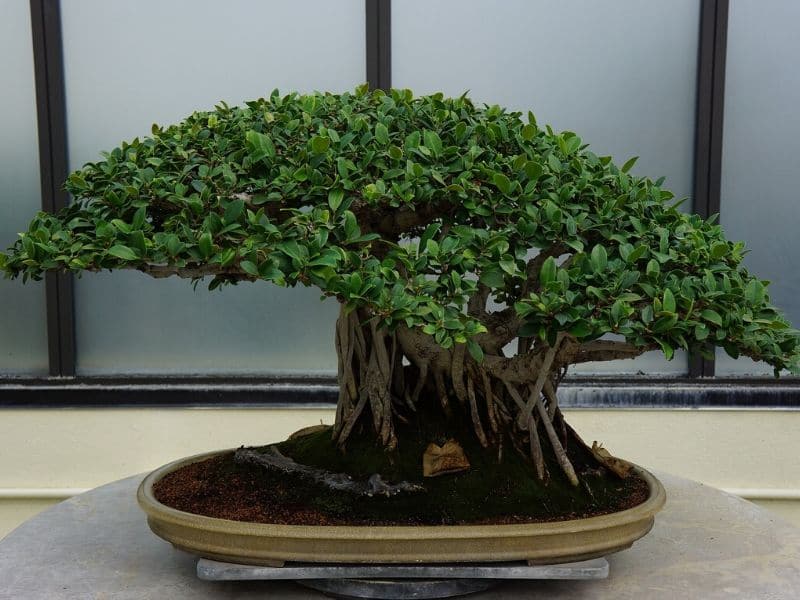
Fertilizer
Sometimes, due to the size of bonsai trees, they will require more fertilizers than any other types of indoor plants, because they lack essential nutrients such as potassium, nitrogen, and phosphorus.
There are many great biological and eco-friendly fertilizers in today’s market, and you will need to search for one that doesn’t have any toxic ingredients. Try to get one that is close to what you can find in nature (without all the unnecessary additives!).
When should I fertilize?
If you have an outdoor tree, then you will need to fertilize your bonsai during its growing period. During the growing season, which usually lasts from spring to early fall, a balanced bonsai fertilizer is good for the trees.
If you have an indoor tree, then you will need to fertilize it throughout the year, depending on the type of bonsai you have.
You should also pay close attention to your bonsai whenever it’s dormant (which is throughout winter time), as this could damage its leaves.
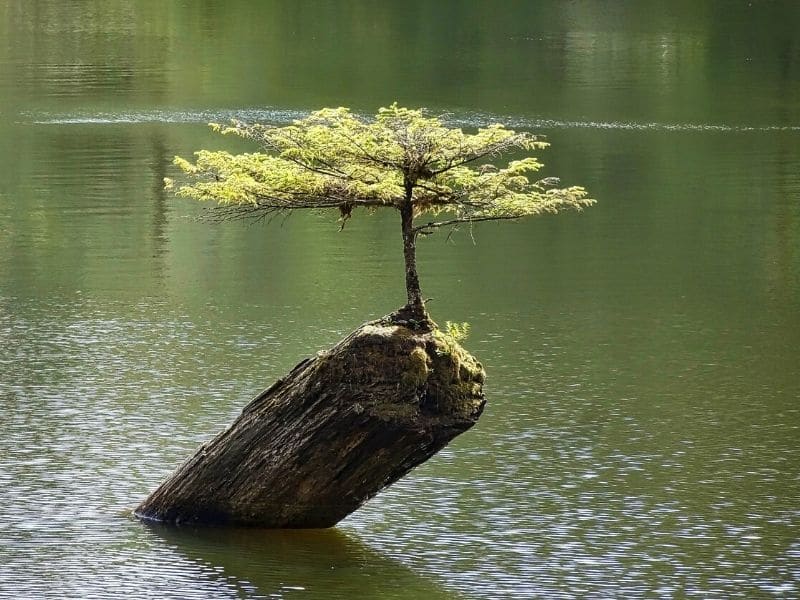
Styling or Training Your Bonsai Tree
Styling or training a bonsai is definitely the most exciting part of having a bonsai tree! Whatever form you choose for your tree and its style, will say a lot about you.
But, did you know that there are many different types of bonsai styling? And people from all over the world usually see this activity as a way to teach mindfulness and obtain peace. It’s pretty impressive what a tree and the maintenance of it can mean to your life if you let it.
Choosing The Types of Bonsai Styles
Whenever you are styling or training your bonsai plant, you will have to be very patient, creative, and do meticulous work, otherwise, your tree could face some serious and damaging consequences.
You will need some time to get used to different styles, but you will also need to train very hard to refine the styling techniques that bonsai trees require.
Here are common bonsai shapes in which you could style or prepare your bonsai tree:
Moyogi (Informal Upright Style)
This refers to a bonsai tree that is trained to grow upright, although it could still present some curves in the trunk. This is the most basic style for bonsai trees, and it’s usually the one beginners learn first. An excellent advantage of this form of training is that you can do it for most species of bonsai trees.
Chokkan (Formal Upright Style)

This is the opposite of Moyogi, because here the trunk tends to go upright and straight, and it doesn’t curve. A tree with this type of styling looks regal, but it also looks like it’s been taken care of correctly.
Shakan (Slanting Style)
This style tends to catch everybody’s attention because it seems like it’s falling! It is a unique style where one side of the tree is growing at a particular angle.
Bunjingi Style
Usually, the trunk is very long and twisted, and it has minimal branches. It is often pruned. It sometimes looks like a fake bonsai because of the lack of branches and leaves.
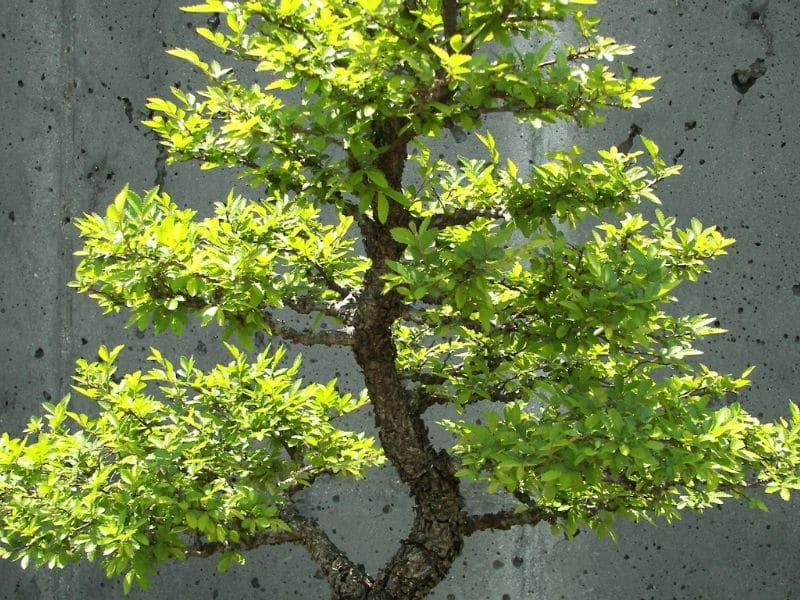
Bonsai Tree Pruning and Trimming
Your goal is to prune a bonsai tree in such a way that it will resemble nature as much as possible. So, let’s say your bonsai tree is outdoors in the middle of the wilderness, then your tree shouldn’t look odd at all! Quite the opposite should occur because you need your bonsai to belong to that place in nature.
- You should get a concave cutter when pruning thick branches.
- If two branches are at the same height of your tree, then you should keep one of them and prune the other one.
- If you have a branch that is odd-looking or it has an unnatural twist, then you can also remove it.
- If your bonsai has big branches at the top, then remove them.
- You will need to listen and observe your bonsai, as this will be the only way for you to understand which branches you should prune and which ones you should leave.
- You can always do an internet search for bonsai progressions; this way, you could see some photographs of what they look like and compare to how you are doing it.
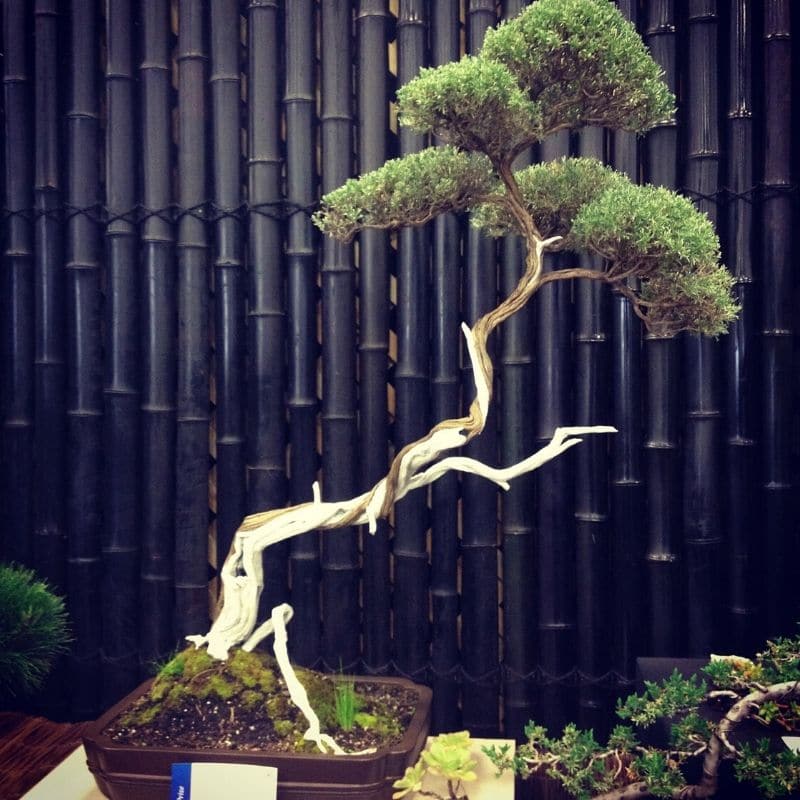
Wiring Your Bonsai Tree
You can wrap anodized aluminum or even copper to the branches. This way, you will be able to guide, bend, and shape them to go whichever way you prefer. You will need to be very careful if you do this, as it could split some of the branches.
If you see that the wires are leaving a mark onto the branches, then remove them immediately.
FAQs
Why is my indoor Bonsai dying?
Several factors could contribute to an indoor bonsai tree dying, including overwatering, underwatering, inadequate light, pests, diseases, or inappropriate soil conditions. It’s essential to assess the specific conditions of your bonsai, addressing any issues related to watering, light, and overall care to determine the cause of its decline.
Can you regrow dead bonsai?
Regrowing a bonsai from a completely dead state can be challenging. Once a bonsai has died, it may be difficult to revive, as the health and vitality of the plant have already been compromised. However, if there are any dormant buds or portions of the plant still alive, you might have some success in regenerating growth. It’s crucial to provide optimal care conditions and be patient to see if any new growth emerges.
Conclusion
Growing, maintaining, and loving a bonsai tree is so much fun for bonsai enthusiasts! You will need to observe them, learn what they like and dislike, you will need to know how they change throughout the seasons, and how they react to the external conditions. To keep your tree healthy, it is important to follow a few basic rules.
Still, it is also very gratifying, and many individuals who stumble upon bonsai trees usually get really hooked and will start seeing their plants differently.
Bonsai trees do not refer to a specific type of tree. However, they do ‘’talk’’ to certain types of people who are willing to understand and take care of a miniature sized tree.
Both tropical and subtropical trees can be used for bonsai. If you have never done it before, it can be challenging, but you will love the result!
Up Next:
References
Reference List:
- Song, C., Ikei, H., Nara, M., Takayama, D., & Miyazaki, Y. (2018). Physiological Effects of Viewing Bonsai in Elderly Patients Undergoing Rehabilitation. International journal of environmental research and public health, 15(12), 2635. https://doi.org/10.3390/ijerph15122635
- Ochiai, H., Song, C., Ikei, H., Imai, M., & Miyazaki, Y. (2017). Effects of Visual Stimulation with Bonsai Trees on Adult Male Patients with Spinal Cord Injury. International journal of environmental research and public health, 14(9), 1017. https://doi.org/10.3390/ijerph14091017
Close
*Photo by oneinchpunch/depositphotos


